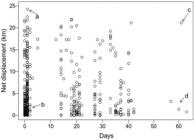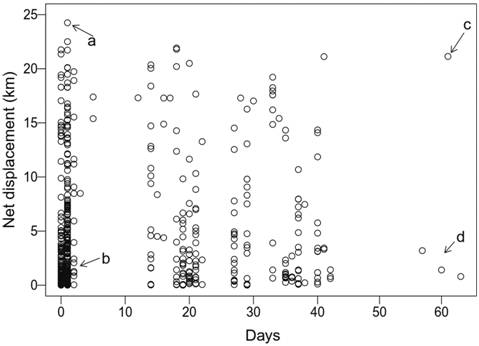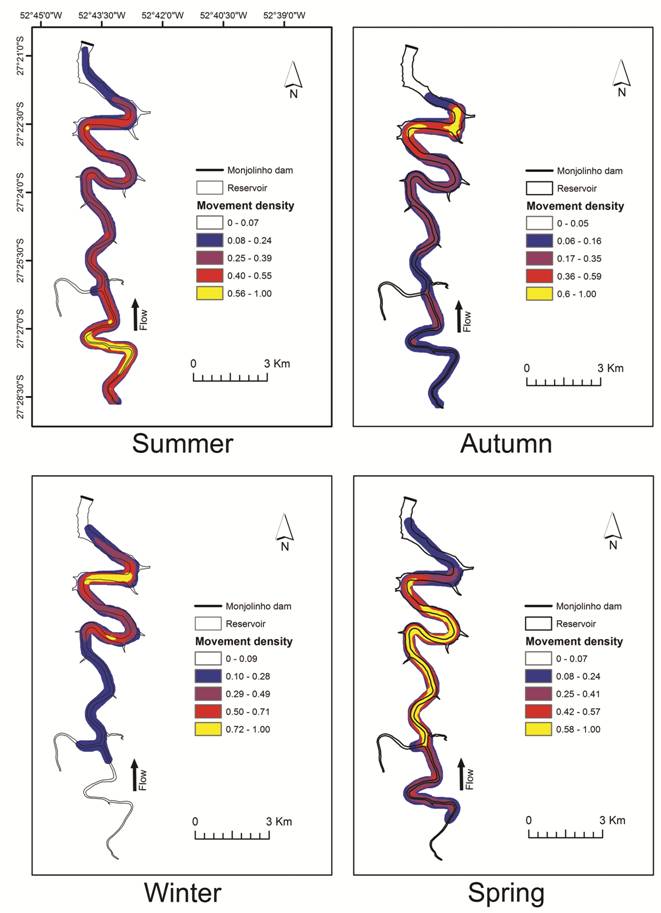ABSTRACT
We investigated whether the movement and distribution of the migratory fish, Salminus brasiliensis, were affected by a small reservoir. We also examined how movement and distribution were related to water temperature, flow, and rainfall. In December 2011 and January 2012, 24 individuals were captured downstream from the dam, tagged with radio transmitters and released in the reservoir (5.46 km² total area). After being released in the reservoir, 18 of the 24 tagged fish travelled upstream, taking an average of 16.6 days to leave the reservoir, with daily movements varying from < 5 km/day to > 24 km/day. However, only seven tagged specimens (29.16%) returned to the lower reservoir section, while the rest remained in the intermediate and upper reservoir sections. Longitudinal distributions and movements were positively related to both upstream flow into the reservoir and water temperature. We found evidence that S. brasiliensis can recognize the longitudinal gradient and is able to continue its upstream migration. On the other hand, the reservoir negatively affected downstream movements, possibly because disorientation prevented movement to the lower reservoir section. Based on these results, we suggest that the impact of small reservoirs on migratory fish species should be objectively addressed in environmental impact assessments and management programs.
Keywords:
Environmental impact; Fragmentation; Habitat use; Hydroelectric power; Radio telemetry

 Thumbnail
Thumbnail
 Thumbnail
Thumbnail
 Thumbnail
Thumbnail
 Thumbnail
Thumbnail
 Thumbnail
Thumbnail
 Thumbnail
Thumbnail





